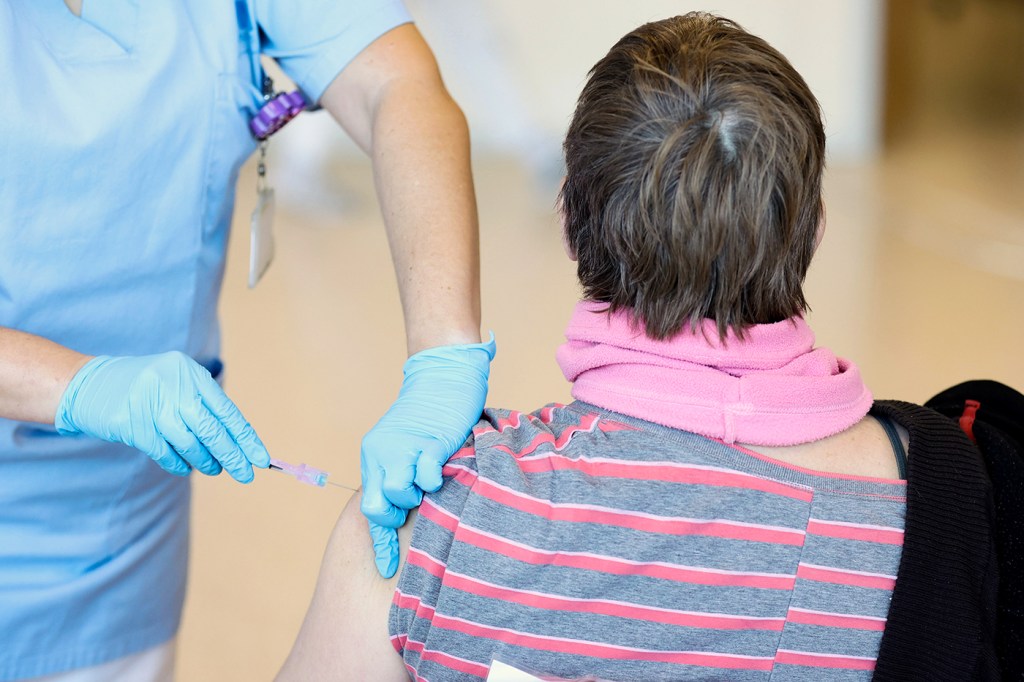The official count of COVID-19 shots in older adults is distorted. What’s going on?

In many states, everyone over the age of 65—and then some—have gotten at least one shot to vaccinate against COVID-19, according to counts by the U.S. Centers for Disease Control and Prevention.
Analysis by researchers at Northeastern and partner institutions indicates that the CDC counts, when compared with census data, show that 117% of older adults in Massachusetts, and 140% of older adults in New Hampshire, have gotten a shot. Indeed, data for 26 states, including all of New England, would indicate that more than 100% of people above age 65 have gotten at least one shot.
How is that possible? The short answer is, it’s not.

David Lazer, distinguished professor of political science and computer and information science, poses for a portrait. Photo by Adam Glanzman/Northeastern University
The longer answer is that there appears to be an underlying problem in linking individuals to doses, says David Lazer, university distinguished professor of political science and computer sciences at Northeastern. This has led to an overestimate in first doses, because second and third shots are attributed as being first doses for someone else, he says.
Lazer and his colleagues at Harvard, Northwestern, and Rutgers analyzed the CDC data as part of an ongoing series of surveys and research collectively called the Covid States Project. The researchers have published more than 80 reports since April 2020 on a variety of COVID-19-related topics, using national surveys that include thousands of people and represent each of the 50 U.S. states as well as Washington, D.C.
In this particular study, Lazer and his colleagues surveyed 22,234 people between March 2 and April 4.
By their count, only 70% of Americans over 65 are vaccinated and boosted, and 13% are completely unvaccinated. Older people who are unvaccinated tend to have completed less formal education, have lower incomes, live in more rural areas, and lean Republican, compared to those who are vaccinated, the researchers found. These trends also run parallel for vaccination characteristics among the U.S. population at large.
While the researchers acknowledged the limitations of their data—older people are less likely to respond to surveys, for example—the discrepancy still stands to have major political and policy implications, Lazer says, as state and federal lawmakers determine when and how to change public health guidelines for COVID-19.
“This really is a matter of life and death,” he says. “Policymakers need to know: ‘Is our problem that people aren’t getting boosted? Or that they’re not getting vaccinated at all?’ Because the latter is a completely different kind of problem.”
The stakes are so high, Lazer says, because of the disproportionate toll that COVID-19 has wrought on older populations. By the end of 2021, 75% of the people who died from the disease were 65 or older, the New York Times reports. One in 100 older Americans has died from COVID-19. For people younger than 65, that ratio is closer to 1 in 1,400, according to the Times.
“The age gradient on this disease is ferocious,” Lazer says. And, the distortion in the CDC counts is likely only to get worse, as more people get second booster shots, he adds, calling upon the federal agency to do a thorough forensic analysis of its data. “This is critically important.”
For media inquiries, please contact Shannon Nargi at s.nargi@northeastern.edu or 617-373-5718.





